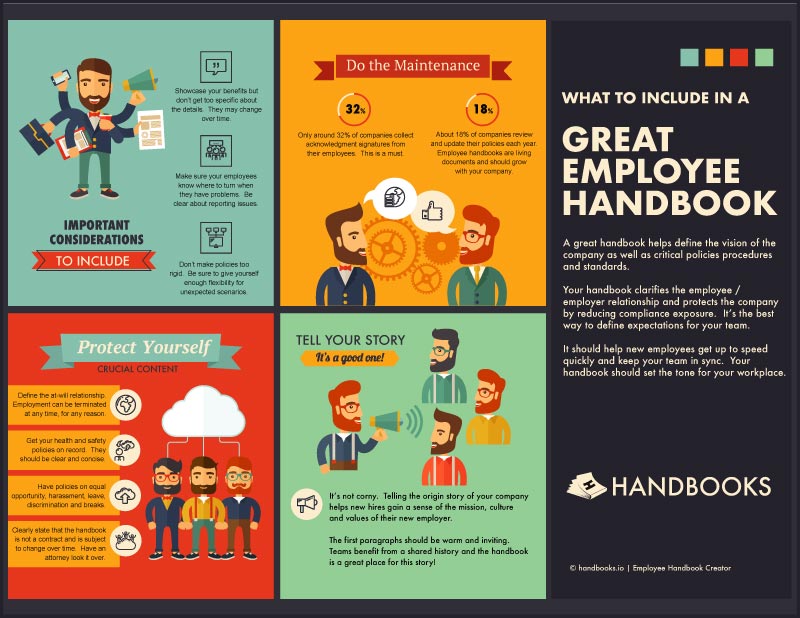Your employee handbook should reflect your unique culture
Many companies are retooling their Employee Handbooks to delight and inform their current, and often prospective, employees.Because Employee Handbooks are evolving to encompass company culture, your Handbook ought to be in sync with the culture of your workplace. A Handbook that is properly designed and executed will highlight one of your company’s ethics, emotions, and logic. The new Employee Handbook is a company culture delivery wagon. These days, employees don’t mind reading the Handbook. In fact, they’ve started embracing it, as long as your Handbook has one or more of the following characteristics:
- Digital or interactive format
- Visually Pleasing
- Emotionally engaging
- Anecdotal / Personal
- Narratively accessible
Many Handbooks are being redubbed “Culture Books” and are no longer marketed only to current employees. Prospective employees can now access many Handbooks online and dial into the company culture before beginning the job application process.
More than just a list of company demands, your Handbook is also an inside look at what your company can offer its employees. Think beyond standard benefits packages. Perks are a great way to ramp up your Handbook. A few sought-after company perks include:
- Supportive of continuing education
- A spirit of openness and teachability from company leadership
- Fun in the workplace
- Celebrates wins well
- Great holiday parties
- Great snacks
Don’t overlook the look and feel of your handbook. Many companies are passing on binders, plastic presentation covers, and hole-punched or spiral-bound floppy copies of drabness. Instead, they are opting to have copies hardbound or otherwise aesthetically assembled.
Increasingly, employers such as Zappos, whose Culture Book has gone viral, have discovered that hiring an employee whose personality matches your company’s culture outside of work is obviously more likely to be a better fit than someone who wears one face on the job and another off the clock.The most important factor here is becoming the kind of company that employees want to work for. Develop your unique culture. Nurture it over time. And codify your culture in a handbook so that it becomes the de-facto standard.
This mindset change helps move companies from a culture of enforcing to instead focusing on inspiring greatness within their team.















